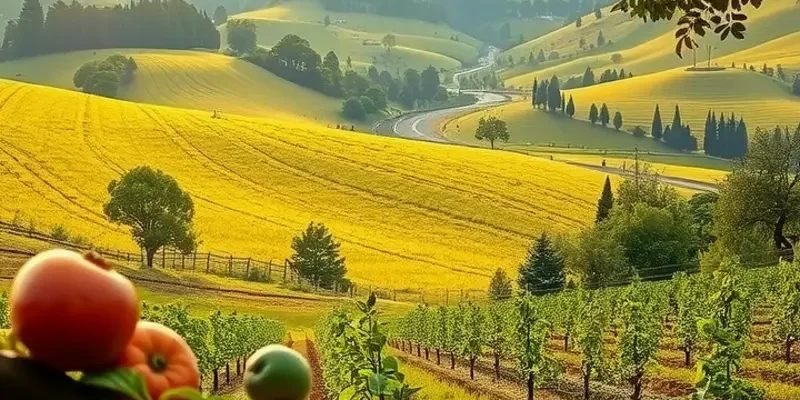Moist roasting is a technique that brings out the best flavors and tenderness in meats and vegetables while keeping them juicy and succulent. By mastering a few fundamental methods, you can enhance your meals and impress family and friends alike. This guide breaks down the essential moist roasting techniques into two practical chapters, ensuring that cooks of all levels can easily implement these skills in their everyday cooking. Let’s dive into the world of moist roasting and discover how to make every dish more delicious.
Understanding Moist Roasting Basics

Moist roasting is a culinary technique that strikes a perfect balance between moist heat and dry heat cooking methods. It produces a succulent and flavorful outcome by using steam and gentle roasting. To master this technique, understanding the basics, including the right equipment and key ingredients, is essential.
First, let’s talk about the equipment needed for moist roasting. A roasting pan with a rack is ideal. The rack elevates the meat, allowing hot air to circulate while the juices drip below, reducing the chance of the meat becoming soggy. Using a lidded roasting pan or covering the dish with aluminum foil helps trap steam, retaining moisture during the cooking process.
Additionally, a reliable meat thermometer is crucial. It ensures meat reaches the correct internal temperature without overcooking, maintaining juiciness. An oven thermometer is also helpful to verify the oven’s temperature accuracy, which can vary and affect cooking times.
Key ingredients for moist roasting start with the right cut of meat. Cuts with ample connective tissue, like chuck roasts, pork shoulders, or chicken thighs, are ideal because they transform into tender morsels under moist heat. Vegetables such as onion, garlic, and root vegetables can enhance flavor and contribute additional moisture.
Braising liquids are essential in moist roasting. A combination of broth, wine, or cider enriches the meat while forming a delicious base for a sauce or gravy. Adding aromatic herbs such as rosemary, thyme, or bay leaves infuses dishes with layered flavors.
The techniques for moist roasting involve a few simple steps. Begin with a hot pan to sear the meat, creating a desirable crust. Deglaze the pan with your choice of liquid, scraping up brown bits for flavor. Add vegetables, herbs, and more liquid before enclosing the meat with the lid or foil.
Maintain a consistent oven temperature, typically between 300°F and 350°F. The low, indirect heat promotes moist and even cooking. Turn the meat occasionally, if necessary, ensuring the liquids reach all sides. Cooking times depend on the type and size of meat; patience is key – allowing enough time breaks down tough fibers.
For a truly flavorful finish, utilize vegetable peelings or scraps to boost the braising liquid’s flavor. Not only does this elevate the dish, but it also aligns with eco-friendly cooking practices like those found in eco-smart kitchen storage.
Mastering the basics of moist roasting elevates your dishes to new heights, delivering perfectly tender and juicy flavors that delight every time. This technique, combined with thoughtful preparation and attention to detail, makes moist roasting an invaluable skill in any cook’s repertoire.
Advanced Techniques for Juicier Outcomes

Achieving the perfect balance of moistness and flavor in roasting calls for an understanding of advanced techniques such as marinades, brines, and precise temperature control. These methods can transform the texture and taste of meats and vegetables, elevating them to culinary masterpieces.
Marinades
Marinades are essential when it comes to infusing meats with flavor and moisture. They typically consist of an acid (like vinegar or citrus juice), oil, herbs, and spices. The acidic component works to break down proteins, making the meat more tender while allowing flavors to penetrate deeper. For best results, marinate meats such as chicken or lamb for at least two hours, up to overnight in the refrigerator. Vegetables like eggplant and zucchini also benefit from shorter marination periods, enhancing their flavor profile.
Brines
Brining introduces another level of moisture and taste enhancement. A brine is a solution of salt in water, which often includes sugar, herbs, and spices. Unlike marinades, brines focus on osmosis, drawing the moisture into the meat. This technique is invaluable for lean meats, such as turkey or pork, which are prone to drying out during roasting. For a basic brine, dissolve 1 cup of salt in 1 gallon of water and fully submerge the meat for several hours in the refrigerator. Adjustments can be made with additional flavors like honey or garlic to suit personal tastes.
Temperature Control
Precision in temperature is vital to achieving a succulent roast. Each type of meat or vegetable has an optimal cooking temperature. Investing in a reliable meat thermometer helps maintain accuracy. For moist outcomes, it is critical to remove the meat from the oven when it reaches a few degrees below the desired doneness. Residual heat (carryover cooking) will continue to cook the meat to perfection. When roasting vegetables, maintaining a higher temperature of around 425°F ensures caramelization while preserving inner moisture.
By mastering these moist roasting techniques, you can enhance the texture and taste of your dishes. These methods offer a harmonious blend of flavor and juiciness, whether preparing a family dinner or an elaborate feast. To explore more enhancements that do not rely on salt, check out our guide on flavor boosters without salt. This can open up new dimensions of taste, complementing your beautifully roasted creations.
Final words
By mastering moist roasting techniques, you can elevate your cooking game and create meals that are not only delicious but also visually appealing. Remember to use quality ingredients, experiment with flavors, and apply the basic principles of moisture retention, temperature control, and proper seasoning. Whether you are roasting a whole chicken, tender vegetables, or your favorite cuts of meat, these techniques will help you produce dishes everyone will enjoy. Don’t hesitate to explore and refine your skills—kitchen mastery comes with practice and a passion for cooking.







